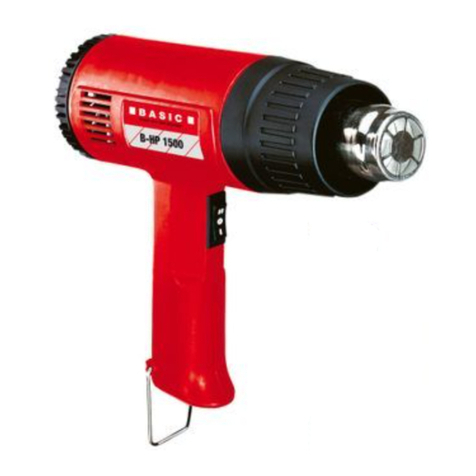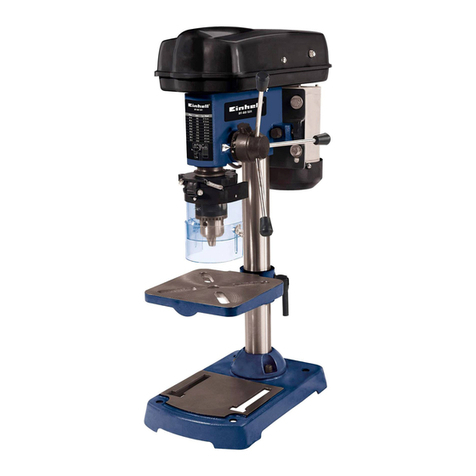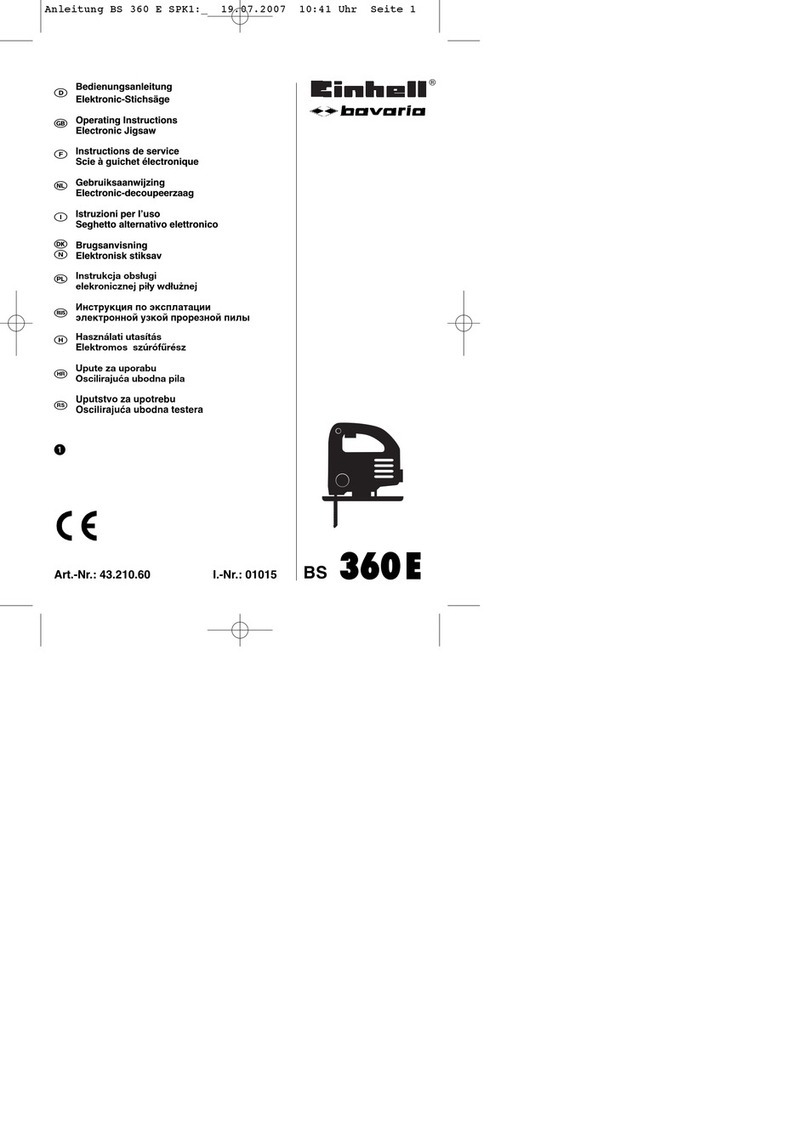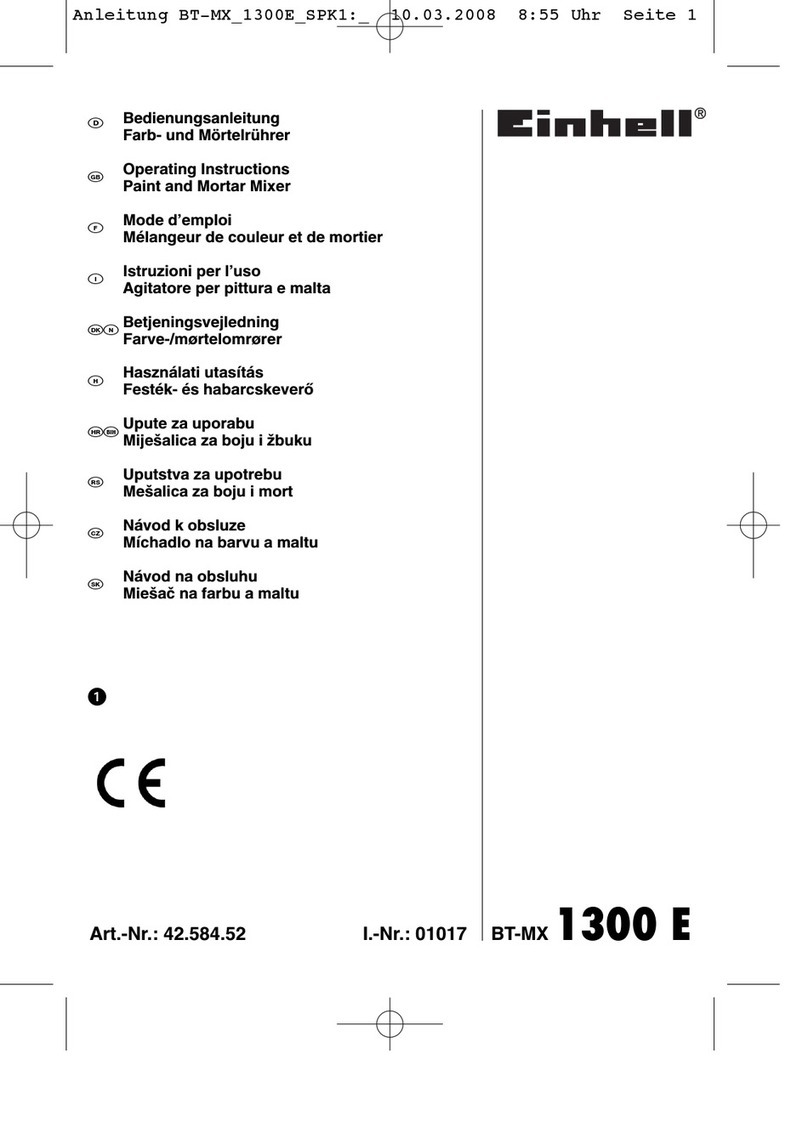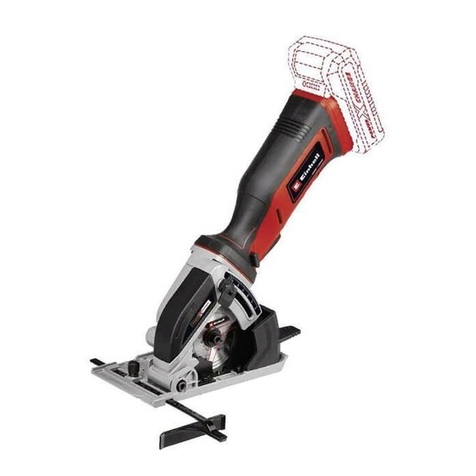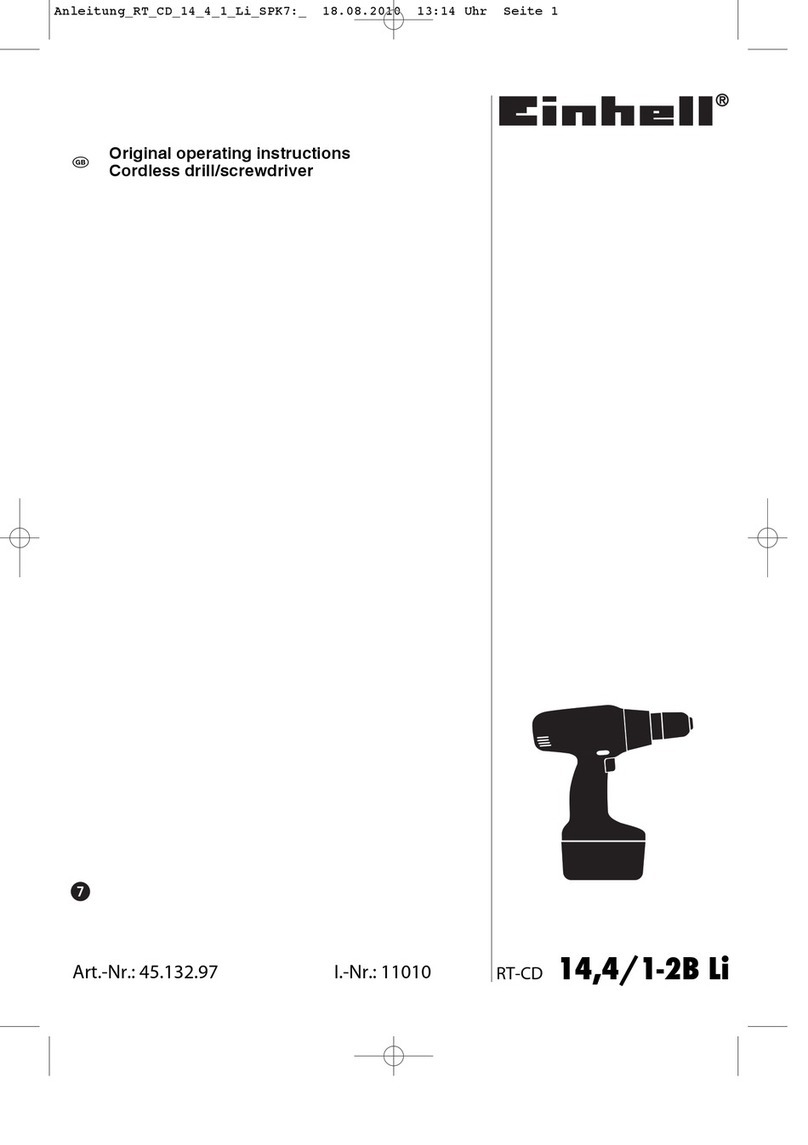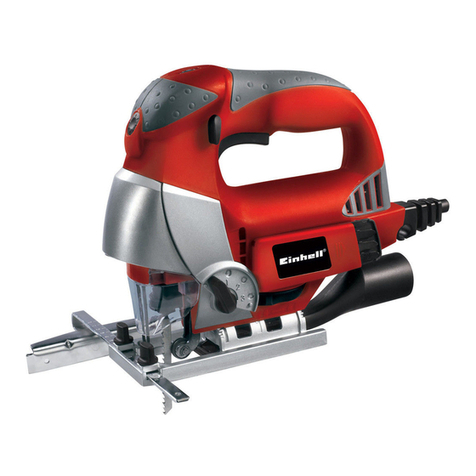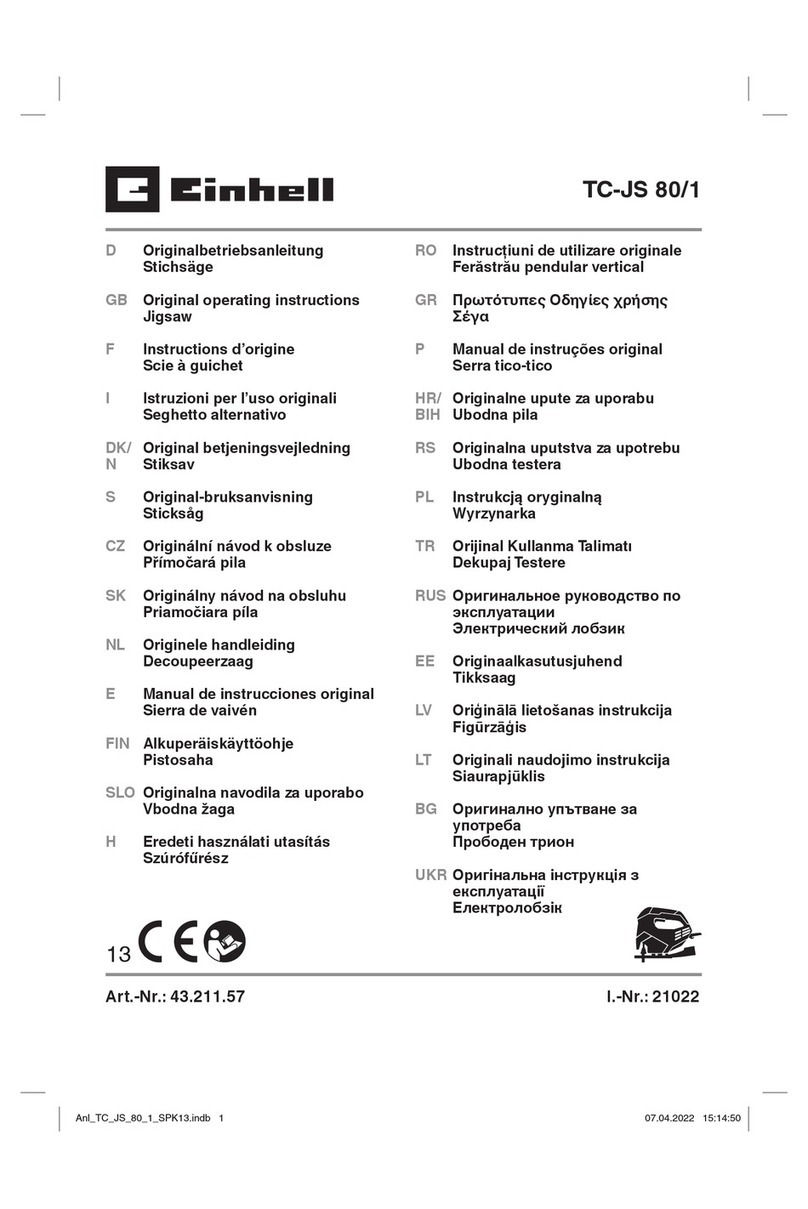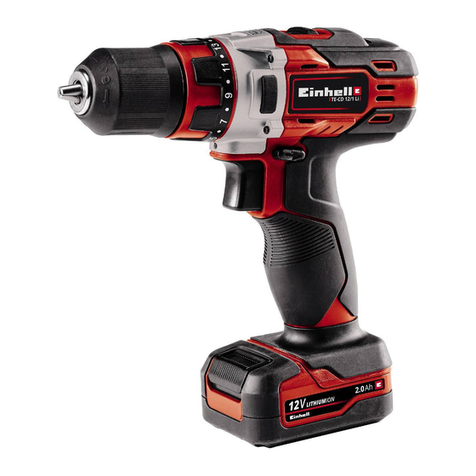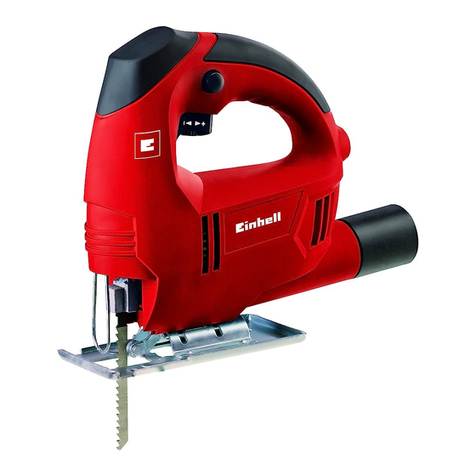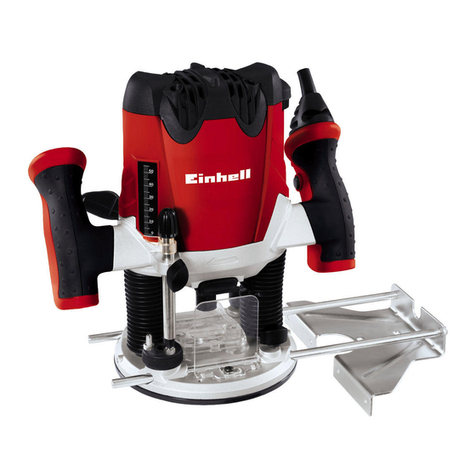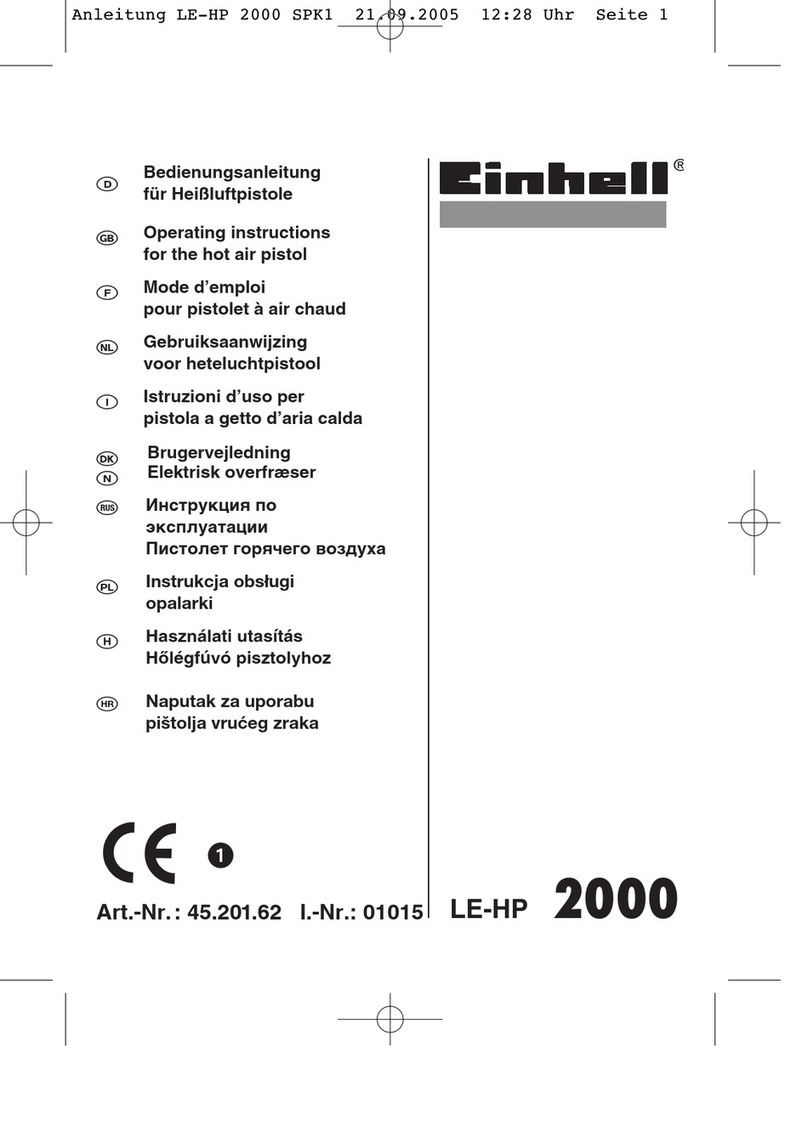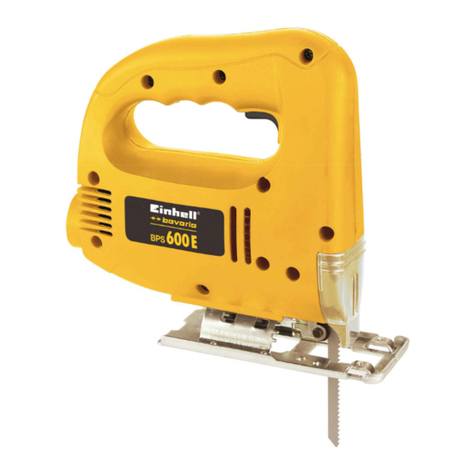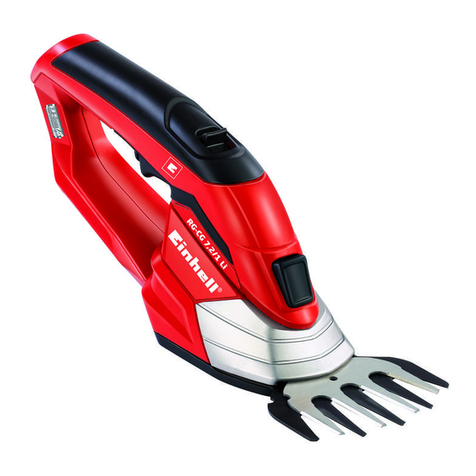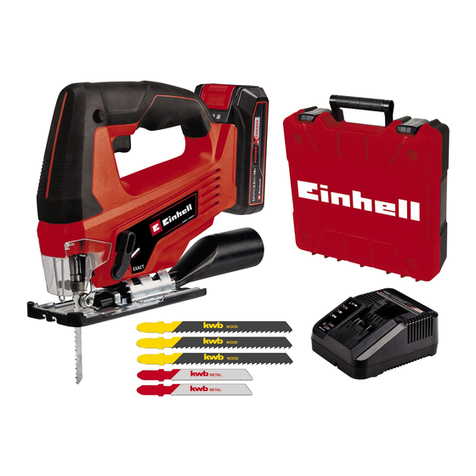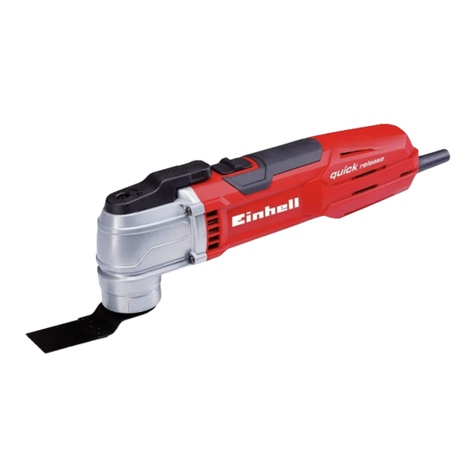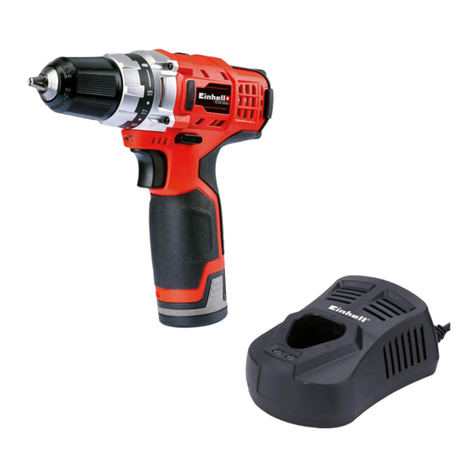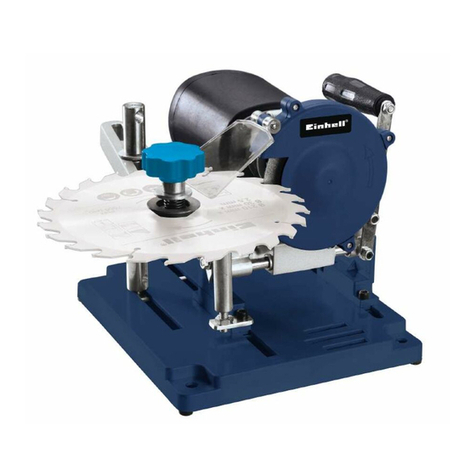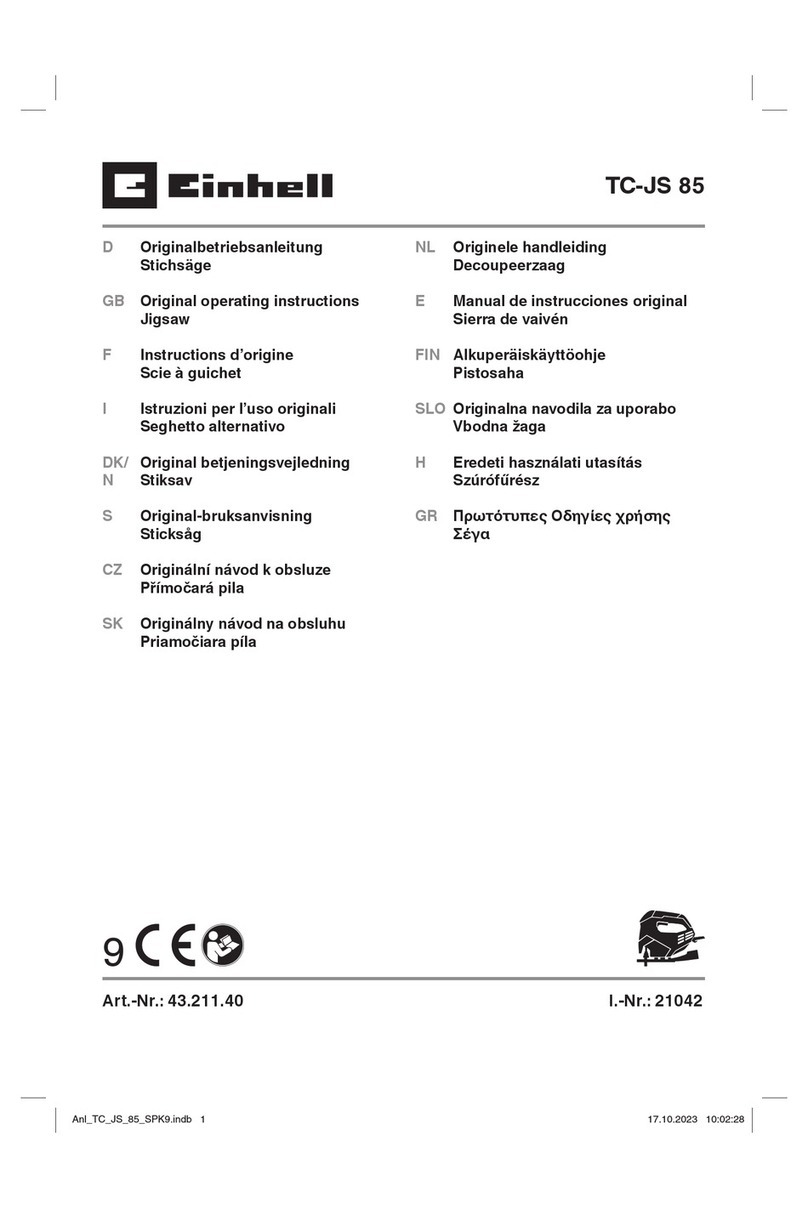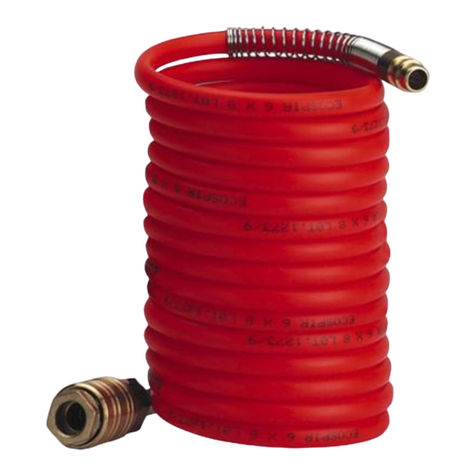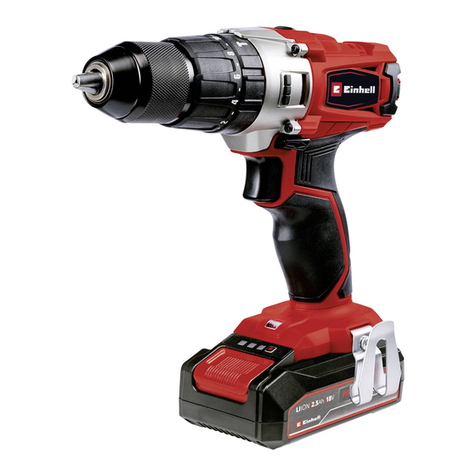
GB
- 6 -
le operating pressure.
l) Do not use damaged hoses and quick-lock
couplings. If compressed-air hoses are torn
off, they may whiplash and cause injuries.
m) When releasing the hose coupling, hold the
coupling piece securely with your hand. This
way you can protect yourself against injury
from a rebounding hose.
n) Before using the air tool, make sure that the
compressed-air source does not supply air
at a pressure higher than the tool‘s maximum
operating pressure.
o) If necessary, you must lower the supply pres-
sure with a pressure reducer.
p) Use only lubricants which are recommended
by the manufacturer.
q) When using compressors and other
compressed-air sources, follow the safety
and operating instructions issued by the
equipment‘s manufacturer.
r) It is imperative to observe the accident pre-
vention regulations in force in your area as
well as all other generally recognized rules of
safety.
s) Users and maintenance personnel must
be physically capable of handling the size,
weight and power of the equipment.
t) Working with the equipment can result in
disorders in the hands, arms, shoulders, neck
and other parts of the body.
u) When using the equipment, be sure to ad-
opt a comfortable posture and change your
posture repeatedly in order to avoid physical
complaints.
v) The risk assessment should include conside-
ration of the dust which is created during the
use of the machine and the dust which alrea-
dy exists and may be whirled up during use.
w) The exhaust air must be directed away such
that the whirling up of dust in a dust- filled en-
vironment is reduced to a minimum.
x) If any dust or vapor is created, the priority
must be to control them at their point of re-
lease.
y) Noise can cause permanent damage to your
hearing. Unprotected exposure to high levels
of noise can result in loss of hearing and
other problems such as tinnitus (ringing, buz-
zing, whistling or droning noises in your ears).
Wear ear-muffs.
z) Vibration-damping material used as an inter-
mediate layer can reduce noise
aa) Vibrations can injure the nerves and cause
blood circulation disorders in your hands and
arms.
ab) Wear warm clothing when you work in cold
surroundings. Keep your hands warm and dry.
ac) Select, service and use the consumables /
plug-in tools as recommended in the opera-
ting instructions.This will help you to prevent
unnecessary dust, gas, noise and vibrations.
Stop using the equipment if you experience
numbness, tingling, pain or whitening of the
skin on your fingers or hands, and consult a
doctor.
ad) Do not hold the plug-in tool with your free
hand as this will lead to a higher vibration
load.
ae) Hold the equipment with a light but secure
grip, noting the reaction forces which arise in
the process.The risk of disorders caused by
vibrations is always greater with a tight grip.
3. Using and handling the air tool
a) Do not overload the equipment. Use the
correct air tool for the job in hand. The
correct air tool will enable you to work better
and more safely within the specific perfor-
mance range.
b) Do not use an air tool if its switch is de-
fective. An air tool that cannot be switched
on or offis dangerous and must be repaired.
c) Disconnect the tool from the com-
pressed-air supply before making any
adjustments to the tool, changing acces-
sories or putting the tool down. These pre-
cautions will prevent the air tool from starting
accidentally.
d) Keep unused air tools out of the reach
of children. Do not allow people who are
not familiar with the tool or who have not
read these instructions to use the tool. Air
tools are dangerous if they are used by inex-
perienced people.
e) Look after air tools with care. Check that
moving parts function correctly and do
not jam, and whether any parts are bro-
ken or damaged such that they adversely
affect the function of the air tool. Have da-
maged parts repaired before you use the
tool. Many accidents are caused by poorly
maintained air tools.
f) Keep your cutting tools sharp and clean.
Carefully maintained cutting tools with sharp
cutting edges will jam less and are easier to
control.
g) Use the air tool, accessories, plug-in
tools etc. as described in these instruc-
tions. Take account of the conditions in
your work area and the job in hand. Using
Anl_TC_PN_50_GB_Korea.indb 6Anl_TC_PN_50_GB_Korea.indb 6 21.12.2022 10:55:5121.12.2022 10:55:51
